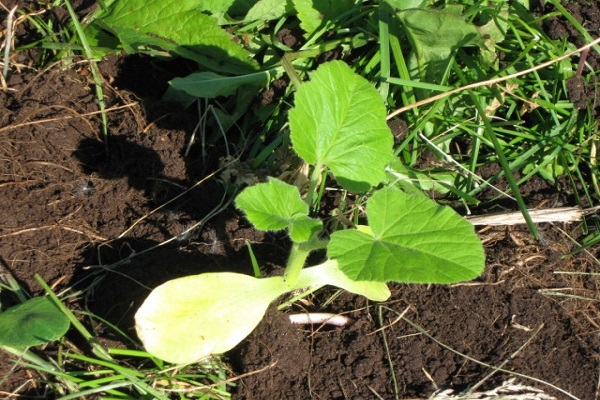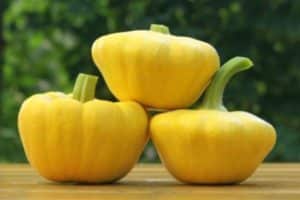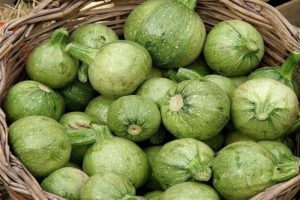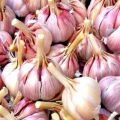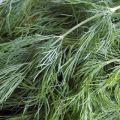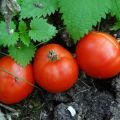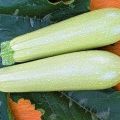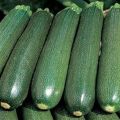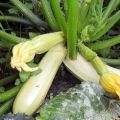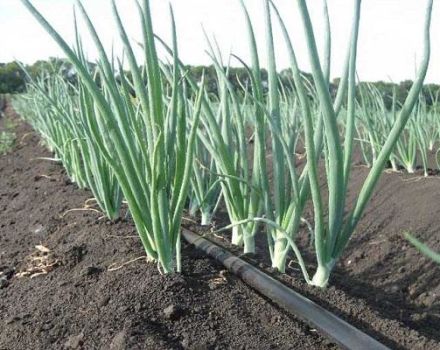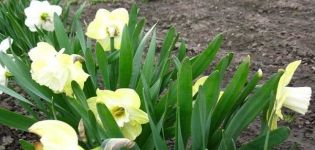Description of the zucchini variety Gribovsky, cultivation features and yield
Why did the Gribovsky zucchini receive a permanent residence permit on the gardeners' beds? Due to its versatility, the vegetable is pickled, stewed, stuffed, pancakes are baked, and caviar is made. The second factor contributing to the popularity of zucchini among summer residents is ease of care and an impressive harvest from the bush.
Vegetable growers select varieties of crops, talking with like-minded people, reading the description of varieties. The features of caring for the Gribovsky 37 zucchini variety, description, advantages and disadvantages, will be discussed below.

Description of the variety
The main characteristic of Gribovsky is ease of cultivation and resistance to diseases.
Gribovsky 37 is a medium early variety. Grown as an annual crop. From planting seeds in the soil to collecting the first fruits 40-50 days. Fruits are elongated, oval, 20–25 cm, weight 700–1300 g. Ribbed at the base of the stem, then even.
Young zucchini of white color, the skin is smooth. Having reached a maximum in size, they acquire a greenish tint, overripe - have a yellowish skin color. The pulp inside is dense, white, firm, of medium density.
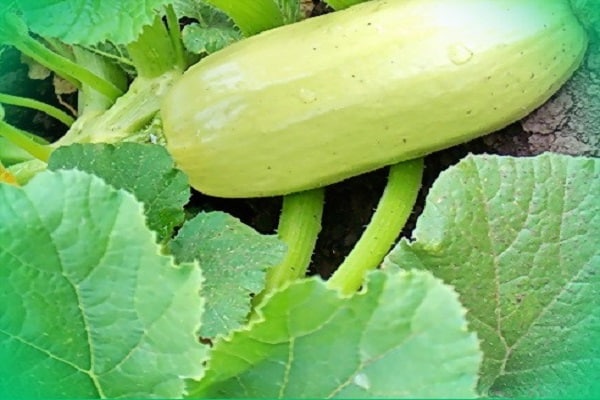
Subject to the cultivation techniques, 4 to 8 kg of zucchini are harvested from one square meter.
Zucchini of the Gribovsky variety grows in the form of a bush with a large number of shoots. The leaves are large, bright green, shaped like a pentagon, sitting on long stalks.
The flowers are male and female, bright yellow, bell-shaped.
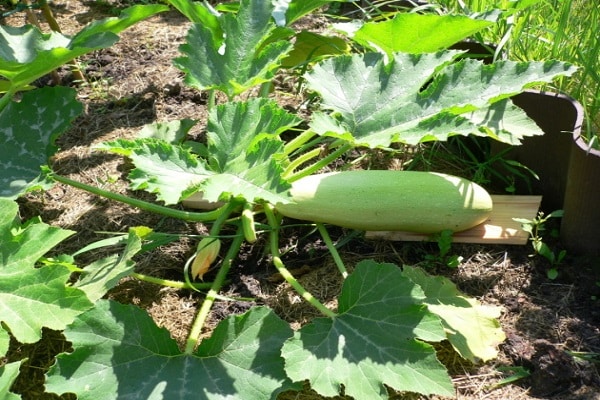
Growing
Gribovsky zucchini loves warmth, therefore it is recommended to grow the variety through seedlings. Based on the climatic conditions of the region, planting zucchini seeds for seedlings is carried out a month before planting in the beds.
For growing seedlings, containers are selected: plastic cups, ceramic pots, mini-greenhouses, peat pots.
In order for the root system to have enough space for development, containers are taken with a volume of 100 ml, with a diameter of 8-10 cm.
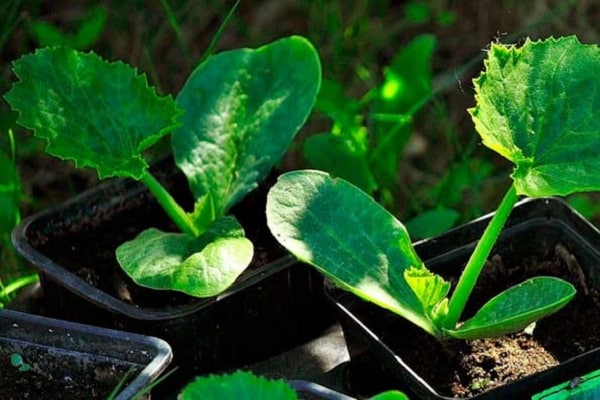
The sequence of actions when planting zucchini seeds Gribovsky:
- Superphosphate or wood ash is added to the planting substrate.
- Seed material is disinfected. To do this, the zucchini seeds are kept in a bright pink solution of potassium permanganate for 30 minutes, then washed with clean water. This will get rid of germs on the seed surface.
- The seeds are soaked in the growth stimulator Epin or Heteroauxin, Zircon, placed on 2-3 layers of wet gauze, wrapped, put on a saucer. Make sure that the gauze does not dry out. Place in a warm place until sprouts appear.
- The seeds that have hatched are buried 4–5 cm into the ground, cover the pots with foil or glass.
- After the emergence of seedlings, the seedlings are transferred to the windowsill, shaded from direct sunlight.
- A week later, the sprouts are fed for the first time.For two liters of water, add one tablespoon of superphosphate and carbamide.
- The next feeding is after 10 days. Plants are watered with a solution of ash or nitrophoska.
- Water the seedlings with settled water at room temperature, twice a week. Waterlogging of the substrate threatens the death of the root system.
For transshipment in open ground, the zucchini must have three true leaves.
For the fastest acclimatization on the street, the seedlings are pre-hardened. For this, the cups are taken out into the open air in the first days for 2-3 hours, every day add two hours of hardening.
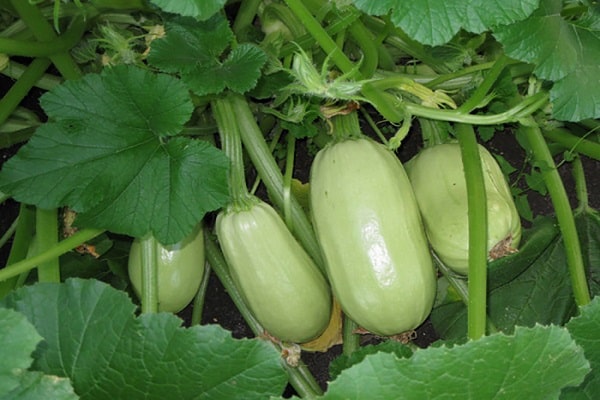
Planting on the beds for this zucchini is done according to the scheme 70x70 cm. Take the seedlings out of the containers carefully, trying not to disturb the earthen ball and not injuring the roots. They are planted in the prepared holes, deepening to the cotyledonous leaves.
Care features
What you need to know in order for the Gribovsky variety to please with the harvest:
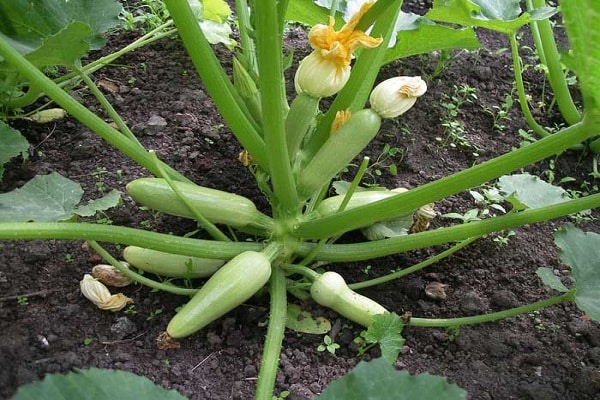
- Remove weeds in a timely manner, this will preserve nutrition in the soil for zucchini, and will prevent diseases.
- Loosening. Do this carefully so as not to snag the roots of the squash. Loosening will allow oxygen to flow freely to the root system.
- Water as the soil dries up, once or twice a week.
- If necessary, pinch the lashes to form the desired length.
- Top dressing is carried out if the zucchini grows on depleted soil. Organic and mineral fertilizers are used for this.
- To remove young fruits, this stimulates the formation of new ovaries.
- To attract insects for pollination - the buds are sprayed with water, into which the pollen from the male flowers has been shaken off.
The male flower does not have a thickening on the peduncle, unlike the female one.
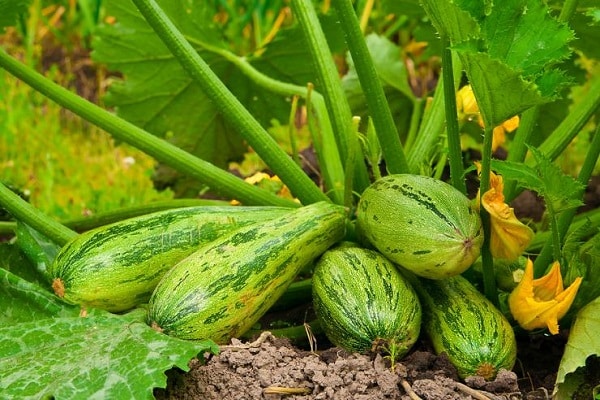
Advantages and disadvantages
The advantages of the Gribovsky 37 variety include:
- disease resistance;
- tolerates cold snaps;
- high taste of the variety;
- yield;
- long storage period and transportability of zucchini.
The disadvantage of the variety is the strong-growing bushes of the vegetable. That makes it necessary to allot a large area of the territory for the cultivation of the Gribovsky zucchini.
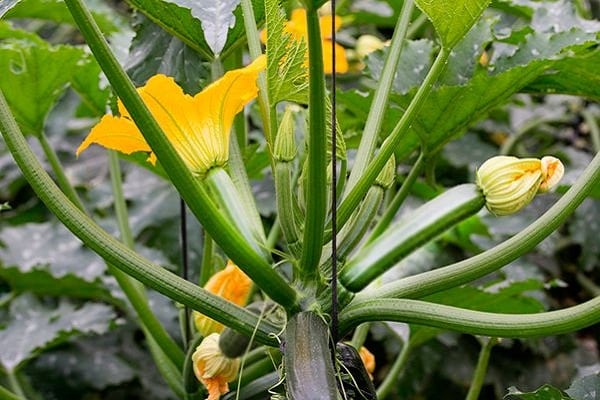
Pests and diseases
The "health" of Gribovsky's squash is strong. Diseases rarely prevail in this variety. The situation with insect pests is different. Spider mites, sprout flies, melon aphids are insects from which the squash must be protected.
The spider mite appears on the site in the second half of June. Lives on the underside of leaves, feeding on their sap. They provoke the fall of ovaries, leaves, flowers. Plants are sprayed with hot pepper infusion with wood ash.
The sprout fly hibernates in the soil. Wakes up in early May. Damages seeds and shoots and stems. To combat fly larvae, Fufanon or Karbofos is introduced into the soil in early spring.
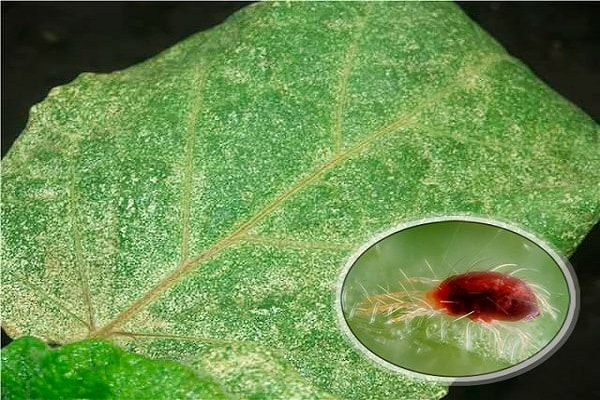
The melon aphid in the spring settles on weeds. Then the colonies of insects that appear attack the zucchini, the back of the foliage, and young shoots. Leaves are deformed, fall off, plant growth stops. Plantings are treated with karbofos, powdered sulfur, infusion of tobacco, yarrow.
Prevention diseases and pests of squash Gribovsky will:
- Presowing treatment of seed material.
- Soil preparation in the fall - water the beds with Fitosporin-M solution. Biofungicidal agent, destroys fungal and bacterial pathogens. To process one square meter, a tablespoon of powder is dissolved in a bucket of water.
- Deep digging of beds after harvest.
- Weed weeding and removal of diseased plants.
- Compliance with crop rotation.
- Planting plants that repel pests - marigolds, garlic, onions, basil, peppermint.
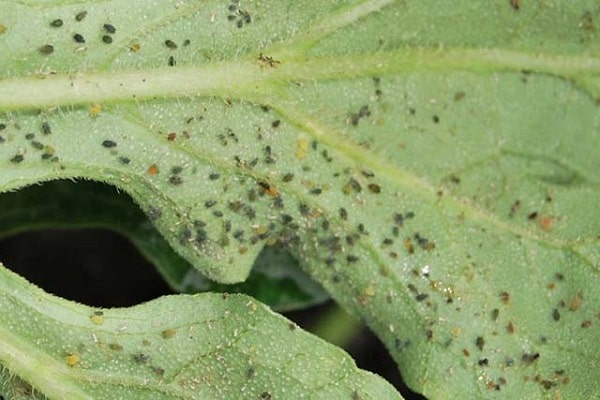
Harvesting and storage
When and how to harvest Gribovsky zucchini depends on whether the vegetables will be consumed immediately, or sent for winter storage.
In the fruiting season, young fruits with soft, light skin that have not reached their maximum growth are removed. Inspect the bush every 7-10 days so that the zucchini does not overripe.
If the zucchini is grown for long-term storage, they do it differently. The fruit is allowed to reach the varietal maximum in size. The skin of such zucchini coarsens, which in the future allows you to store the harvest until February-March.

Zucchini prepared for storage are dried in the air, wiped off dirt with a dry cloth. Placed in boxes with straw or sawdust so that they do not touch. Store in a cool place.
Another way to prepare Gribovsky zucchini is freezing. This method preserves the taste and nutrients of the vegetable. To freeze you will need:
- collect fruits, inspect for damage;
- wash thoroughly, peel off, remove seeds;
- cut the pulp;
- put in bags for freezing, send to the freezer.
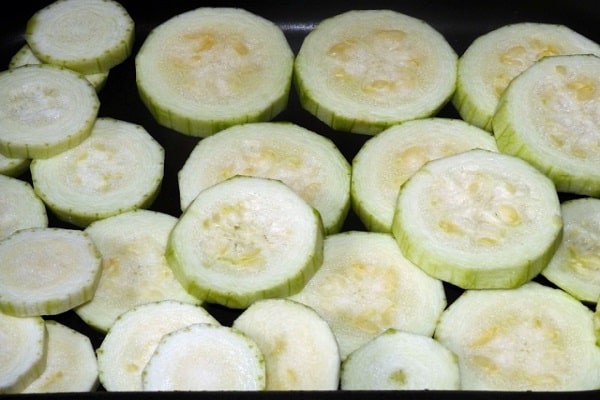
Gardeners reviews
Summer residents who grow the Gribovsky zucchini variety on their plots say that the seedlings are friendly, a decent harvest from the bush, high taste qualities of the fruits, while the culture is undemanding to care for.
